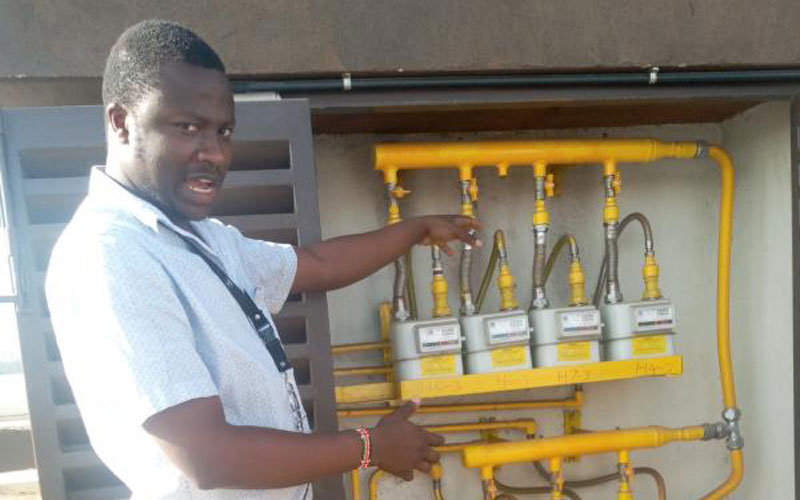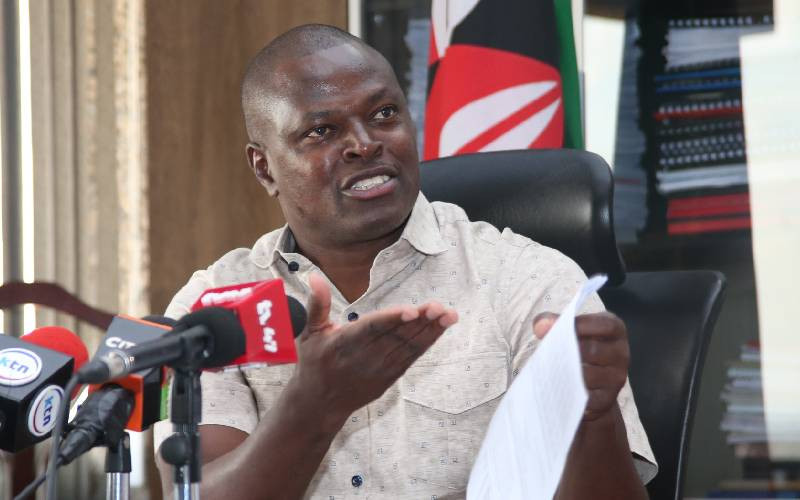Clarkson Adewa, a service provider at LPG explains how a piped gas meter connected to Freedom Heights apartments in Lang'ata operates on Thursday, March 24, 2022 [David Njaaga, Standard]
×
The Standard e-Paper
Fearless, Trusted News






